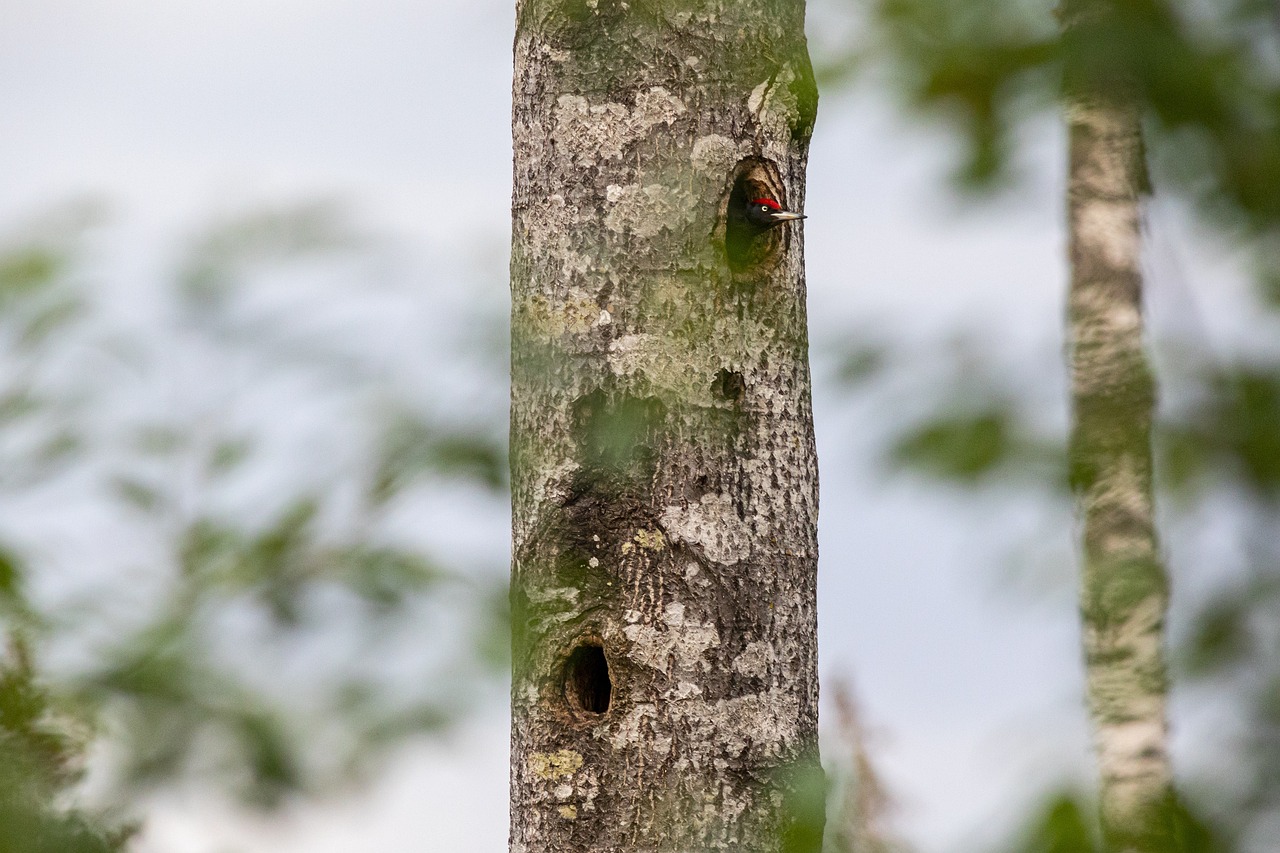The Black Woodpecker (Dryocopus martius) is a striking and impressive bird, known for its large size and distinctive appearance. Here are some key details about this remarkable woodpecker:
Appearance
- Size: The Black Woodpecker is one of the largest woodpecker species in Europe, measuring about 45-55 cm (18-22 inches) in length with a wingspan of 64-84 cm (25-33 inches).
- Coloration: It is predominantly black, with males featuring a bright red crown and females having a red patch on the back of the head. The rest of their plumage is glossy black.
- Bill: They have a strong, chisel-like bill, which is pale ivory in color, used for drilling into wood.
Habitat
- Range: The Black Woodpecker is found across much of Europe and northern Asia, extending from Spain and Scandinavia to Japan and Korea.
- Environment: It prefers mature forests with large trees, both deciduous and coniferous. They are often found in old-growth forests but can also inhabit mixed woodlands and wooded areas in mountainous regions.
Behavior
- Diet: The primary diet of the Black Woodpecker consists of insects, especially wood-boring beetle larvae and ants. They also consume other invertebrates, nuts, and seeds.
- Foraging: They use their powerful bill to drill large holes in trees to access insects. Their drumming, which is a rapid series of pecks, is also used to communicate and establish territory.
- Nesting: Black Woodpeckers excavate large nest cavities in trees, which they use for breeding. These cavities are also important for other species, providing nesting sites for birds and mammals.
- Territoriality: They are territorial birds, with pairs maintaining and defending their territory throughout the year.
Life Cycle
- Breeding Season: The breeding season typically starts in late winter to early spring, depending on the region.
- Eggs and Incubation: The female lays 3-5 eggs in the nest cavity. Both parents share incubation duties, which last about 12-14 days.
- Fledging: The chicks are altricial, meaning they are born blind and helpless. They fledge about 24-30 days after hatching but remain dependent on their parents for several more weeks.
Adaptations
- Drumming: The Black Woodpecker’s drumming is an important form of communication. They can drum at varying speeds and rhythms to signal different messages.
- Tongue: Their long, barbed tongue is specially adapted to extract insects from deep within tree bark and wood.
Ecological Role
- Keystone Species: As primary cavity nesters, Black Woodpeckers play a crucial role in forest ecosystems. Their abandoned nest cavities provide vital nesting sites for many other species, such as smaller birds, bats, and even some mammals.
- Pest Control: By feeding on wood-boring insects, they help control populations of potentially harmful pests in forests.
Conservation
- Status: The Black Woodpecker is generally considered to be of Least Concern by the IUCN, but local populations may be threatened by habitat loss and fragmentation.
- Threats: Deforestation, logging, and the removal of dead or dying trees can negatively impact their habitat and food sources.
- Conservation Efforts: Conservation of mature forests and the maintenance of dead wood in forests are essential for the protection of Black Woodpecker habitats. Efforts to preserve old-growth forests and implement sustainable forestry practices benefit this species and many others.
The Black Woodpecker is an important and charismatic bird within its habitat. Its presence indicates healthy forest ecosystems, and its role in creating nest cavities makes it a keystone species with significant ecological importance.
Visited 996 times, 10 visit(s) today
Views: 1723
Subscribe to the newsletter:
